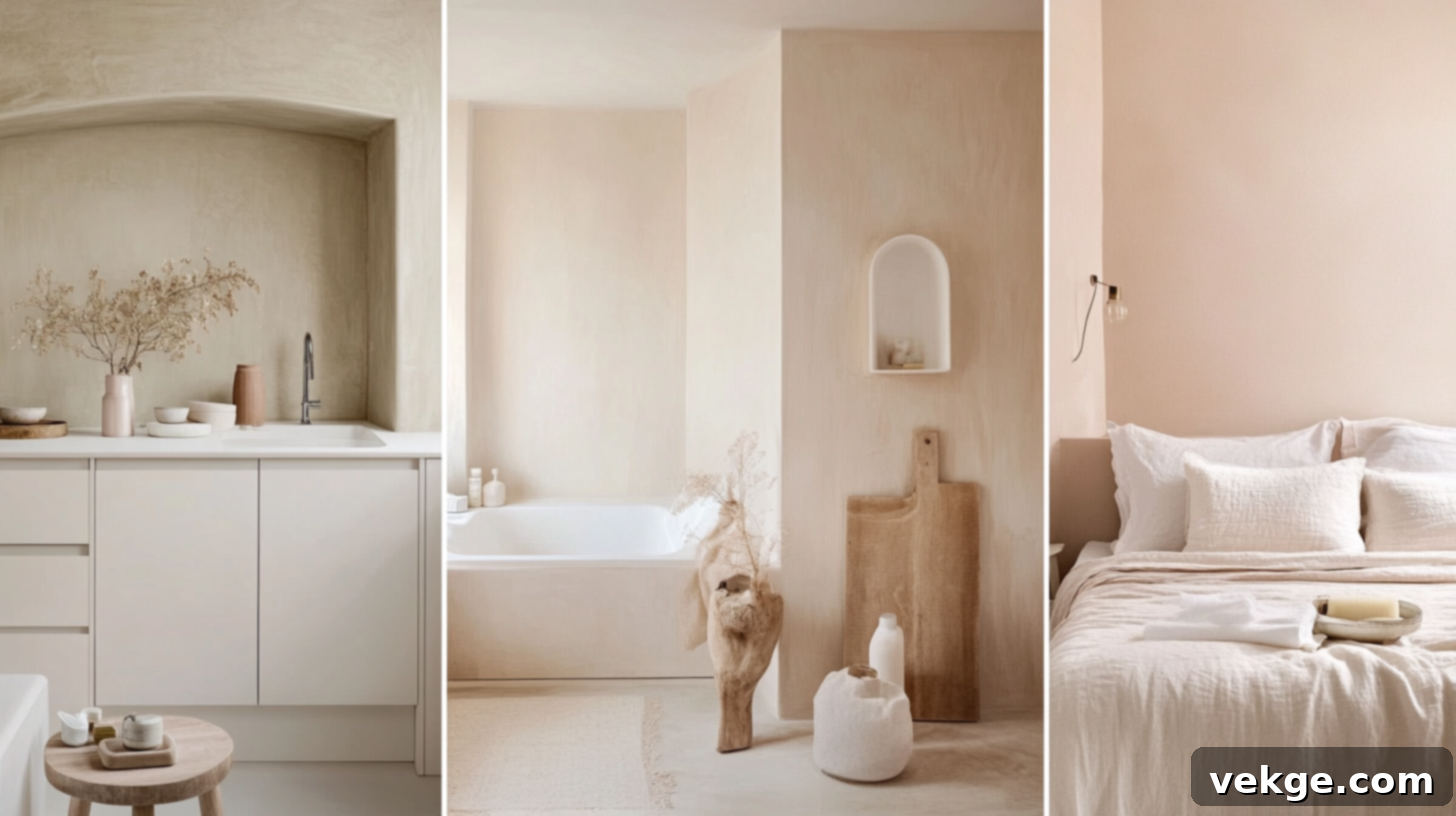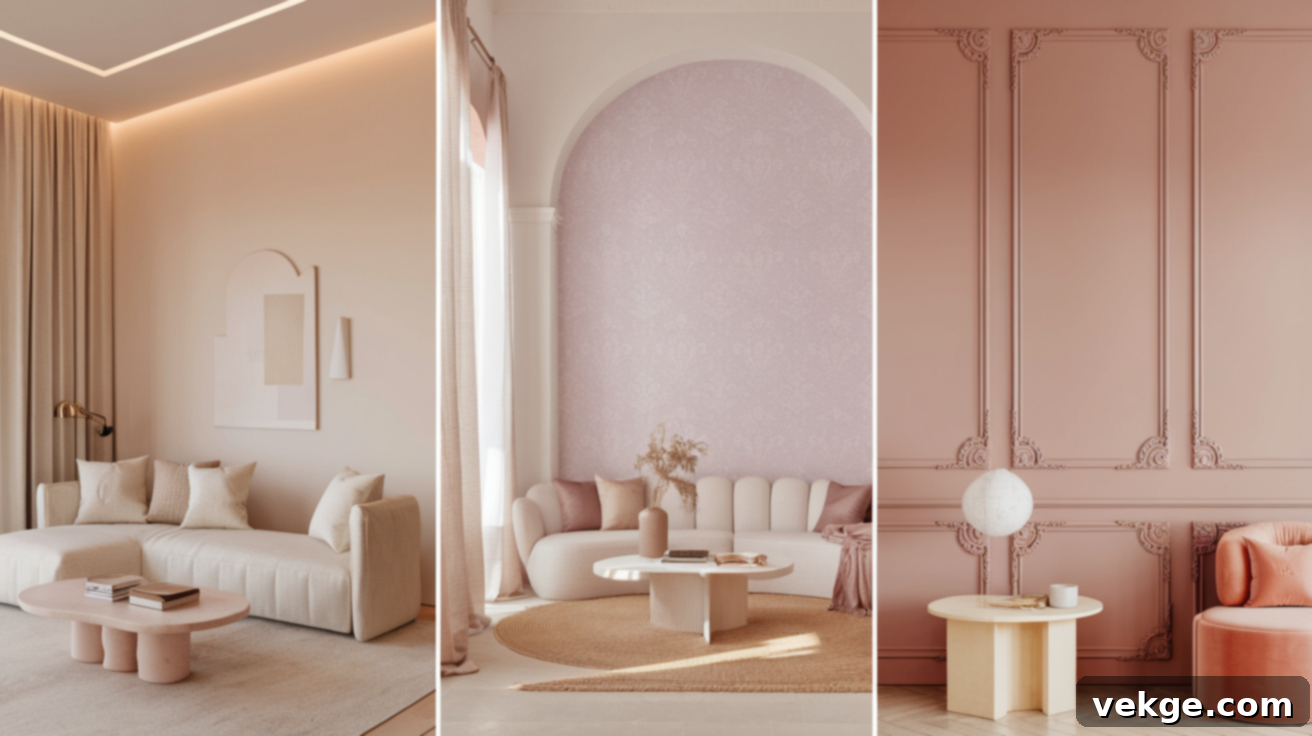Discovering the Perfect White: A Comprehensive Guide to White Paint with Pink Undertones
Have you ever meticulously painted a wall a crisp white, only to step back and notice an unexpected, subtle blush of pink? You’re certainly not alone in this experience. It can be incredibly frustrating when the intended calm or clean aesthetic of your white paint shifts once it dries, or as the natural light changes throughout the day. What was envisioned as a serene, neutral backdrop might suddenly feel “off,” leaving you wondering where you went wrong.
This comprehensive guide is designed to demystify the world of white paints, helping you understand and navigate the nuances of color before you even pick up a brush. We’ll delve into what pink undertones truly are, why they manifest in certain white paints, and, most importantly, how to confidently identify and choose them. We’ll walk you through a curated selection of the best white shades featuring pink undertones, explore ideal applications for these unique hues, and provide practical tips for testing colors in your own home. Our goal is to empower you to select a white paint that perfectly embodies your vision, ensuring your space feels exactly the way you want it to.
Understanding Pink Undertones in White Paint
Undertones are the subtle, underlying colors that emerge from white paint once it’s applied to a surface, especially when influenced by light or surrounding elements. They’re often imperceptible in the paint can but become distinctly visible on your walls. These hidden hues are what make white paint appear warm, cool, creamy, or even, in our focus, slightly pink.
Pink undertones typically appear when red pigments are mixed into the white base. Sometimes, this is a deliberate choice by paint manufacturers to create a specific warm, inviting shade. However, pink undertones can also reveal themselves due to external factors. The color temperature of your lighting (warm versus cool bulbs), the natural light a room receives throughout the day, the colors of your furniture and decor, the flooring, and even the size and orientation of the room can all influence how these subtle red tones are perceived, making a seemingly neutral white lean towards pink.
For instance, a room bathed in warm, incandescent light is more likely to accentuate pink or red undertones, making a white paint appear softer and rosier. Conversely, cooler, blue-spectrum LED lighting might suppress these warm tones, making the same paint look crisper. Similarly, painting a white with a hint of pink in a room with a large red rug or warm wooden floors could draw out the pink, whereas a room with cool grey furnishings might mute it. Understanding these interactions is key to predicting how a white paint will truly behave in your unique space.
Top White Paints with Distinct Pink Undertones
White paint is far from a single, static color. Many shades carry soft, delicate hints of other colors, with pink being a particularly popular and beautiful choice. These subtle shifts can instantly imbue a room with warmth, making it feel more relaxed, welcoming, and sophisticated than a stark, pure white. The following selections offer just enough color to add comfort and character, while still maintaining a light, airy, and neutral aesthetic.
Benjamin Moore Picks
1. White Blush OC-86

White Blush OC-86 is a truly exquisite soft white that radiates a light, rosy glow without ever feeling overtly pink. Its gentle warmth makes it an exceptional choice for sun-drenched rooms, where abundant natural light beautifully enhances its subtle, inviting character. This shade harmonizes wonderfully with natural elements like light-toned woods and other understated neutrals. Consider using it in living rooms, serene reading nooks, or hallways that benefit from consistent daylight to create an atmosphere of quiet elegance.
2. Pink Damask OC-72

Pink Damask OC-72 leans a bit more noticeably towards a gentle pink than many other whites on this list, yet it retains a soft, understated quality. It’s an excellent option for spaces where you desire a distinct touch of warmth and a whisper of color without fully committing to a bold pink shade. This hue looks particularly stunning when paired with creamy fabrics, linen tones, or soft gold accents, making it an ideal choice for adding comfort and romance to master bedrooms or cozy guest rooms.
3. White Opulence OC-69

White Opulence OC-69 is a luxurious paint with a creamy base that carries a very mild, almost imperceptible pink tint. It’s frequently chosen for rooms that tend to feel cool or sterile, as it introduces a subtle visual warmth and softness. This sophisticated shade pairs beautifully with gold accents, warm greys, and carefully chosen soft lighting to enhance its opulent feel. It’s perfectly suited for creating an inviting atmosphere in family rooms, elegant dining areas, or even tranquil home offices where a touch of comfort is desired.
4. Atrium White OC-145

Atrium White OC-145 possesses a red base that allows its pink undertones to become more pronounced with changes in lighting, particularly in rooms that receive less direct sunlight or feature specific artificial light sources. This versatile white works exceptionally well when your goal is a warm, inviting feel that doesn’t overwhelm or compete with other colors in your decor. Experiment with it in spaces that feature neutral palettes, such as light browns, soft beiges, or even muted greens, to create a harmonious and balanced environment.
5. Ballet White OC-9

Ballet White OC-9 is a delicate off-white that gracefully takes on a soft pink tone, especially when illuminated by warm lighting. It provides a quiet, understated touch of color, offering warmth and depth without drawing excessive attention to itself. This versatile shade is highly favored for open-concept layouts or transitional spaces that connect various rooms, as it maintains continuity while adding subtle character. It also beautifully complements light wood tones and natural textures, enhancing a cozy, yet refined aesthetic.
6. Opaline OC-33

Opaline OC-33, while appearing as a subtle off-white on a paint swatch, undergoes a beautiful transformation with the unique lighting conditions of your home. In a warmly lit room or under soft, diffused bulbs, its delicate pink undertone becomes more noticeable, creating a serene and inviting atmosphere. This sophisticated shade is well-suited for spaces featuring crisp white trim or light taupe furnishings, adding a layer of depth and softness without creating strong, jarring contrasts. It’s ideal for crafting a tranquil retreat.
Sherwin-Williams Picks
7. Alabaster SW-7008

Alabaster SW-7008 is a renowned soft white that effortlessly blends into a myriad of spaces, creating a calm and adaptable backdrop. While it maintains a sense of serene neutrality on its own, when placed adjacent to cooler colors or illuminated by warmer light sources, a gentle pink undertone may begin to emerge, lending it a subtle blush. This popular shade is frequently specified for entryways, bustling kitchens, or main living areas where a soft, inviting, and versatile base color is desired to enhance the home’s overall warmth and comfort.
8. Snowbound SW-7004

Snowbound SW-7004 is a crisp, clean white that initially presents as cool, but possesses the remarkable ability to lean distinctly pink depending on the specific lighting conditions. Rooms facing south, which are typically bathed in warm, natural light for most of the day, are particularly adept at drawing out its warmer, rosier aspects. This versatile shade complements both modern, minimalist decor and more classic, traditional styles. It can be paired with dark floors for a striking contrast or with soft, layered textures to maintain an atmosphere of serene sophistication.
9. Moderate White SW 6140

Moderate White SW 6140 features a calm, inviting cream base that carries a very quiet, subtle pink touch, making it a truly comfortable and welcoming option. It’s particularly well-suited for shared spaces such as living rooms, family dens, or expansive open-plan areas where a soft, continuous flow is desired. This shade pairs beautifully with neutral furniture, natural wood elements, or terracotta tiles, helping to balance rooms that might otherwise feel too stark and enhancing a sense of grounded warmth and hospitality.
10. Roman Column SW 7562

Roman Column SW 7562 is a sophisticated white that offers a clean, elegant feel with just a touch of underlying warmth. In the right environment, its delicate pink undertone becomes more apparent, especially when it interacts with complementary colors like beige, taupe, or warm brown elements in the room. This makes it a dependable choice for open, flowing areas where it tends to blend seamlessly with simple, soft furnishings and layered textures, creating an atmosphere of understated luxury and timeless appeal.
11. White Dogwood SW 6315

White Dogwood SW 6315 is a shade that leans closer to a light pink, yet it possesses an inherent softness that allows it to read more like a very warm, subtle white in expansive, sunny spaces. It is an excellent choice for adding a gentle touch of visual interest to walls without committing to a bright or bold color statement. Consider applying it in nurseries, cozy powder rooms, or elegant dressing areas where a calm, tender, and effortlessly soft aesthetic is desired to create a comforting and intimate atmosphere.
12. Shell White SW 8917

Shell White SW 8917 features a gentle pink base that provides a subtle warmth without ever becoming overwhelming. Its balanced neutrality makes it a versatile choice for painting trims and doors, allowing them to feel integrated rather than stark, but it also performs beautifully on full walls. Homeowners frequently select it for bathrooms, spacious closets, or laundry rooms, where it helps maintain a bright and clean feel while adding a touch of inviting softness. This shade pairs especially well with ivory and creamy tones, enhancing its delicate charm.
Other Picks and Designer Favorites
13. Farrow & Ball’s Calamine

Farrow & Ball’s Calamine, renowned for its soft pink hue, surprisingly acts more like a beautifully nuanced white in large, brightly lit areas. It presents as a cooler pink than many other options on this list, yet it still imparts a distinctively gentle and elegant feel. This sophisticated shade is ideal for modern spaces or homes featuring pale oak wood, brushed metal accents, or crisp white fabrics, where it can contribute to a clean, serene, and subtly refined finish, adding depth without visual clutter.
14. Valspar Soft White 7004-9

In warm lighting conditions, Valspar Soft White 7004-9 reveals a lovely peachy-pink tone that feels wonderfully soft and settled. This shade offers a refreshing departure from standard whites, introducing a delicate warmth that makes it an excellent choice for creating inviting bedrooms or comfortable lounges. It harmonizes beautifully with soft beige, warm tan, or mid-tone wood furniture, contributing to a space that feels balanced, harmonious, and truly welcoming, perfect for relaxation and comfort.
15. Behr Cotton Knit

Behr Cotton Knit is a creamy white that subtly holds a soft pink tone, which becomes particularly apparent and charming in the gentle glow of afternoon light. This inviting shade integrates seamlessly into homes adorned with natural tones, earthy textures, or stone elements. Many designers recommend it for larger spaces, where it effectively introduces warmth and depth without making the room feel enclosed or overly dark. It also excels at softening sharp lines found in modern furniture or architectural tilework, creating a more cohesive and welcoming environment.
16. Behr Cameo White MQ3-32

Behr Cameo White MQ3-32 features a very quiet, almost imperceptible pink tint that becomes more distinctly visible in rooms with warmer ambient light or specific warm color palettes. It’s a highly popular choice in homes boasting natural wood floors or a predominantly neutral palette, where it can beautifully complement existing finishes. The overall feel of this color is remarkably calm and gentle, making it an excellent selection for transitional spaces like hallways, stair landings, or open-plan living areas where a subtle, soothing backdrop is desired.
17. Clare Paint Timeless

Clare Paint Timeless is a sophisticated soft white that carries a delightful hint of blush. This subtle touch works to uplift and brighten a space without ever dominating the overall aesthetic. Interior designers frequently recommend it for creating serene and inviting atmospheres in bedrooms, peaceful nurseries, or cozy reading rooms. It pairs exceptionally well with natural textures such as linen, clay, and rattan, enhancing an organic and tranquil feel. This shade is particularly useful when you desire a white that offers more warmth and character than a plain, unadorned white, but without fully committing to a distinctly colored wall.
Where to Harmonize White with Pink Undertones

White paint infused with a pink base offers a unique opportunity to inject warmth and a welcoming glow into diverse areas of your home. These versatile shades perform beautifully in both intimate small rooms and expansive open-plan spaces, especially where natural light undergoes significant changes throughout the day. They are frequently employed to soften rooms that might otherwise feel too cool, stark, or simply uninviting. The key to success lies in thoughtfully selecting the right spot, ensuring the color reveals its most charming qualities without becoming overpowering or unintended.
Best Rooms for These Shades
- Kitchens: Soft whites with pink undertones can transform a kitchen into a warm, inviting hub. They are particularly effective in brightening kitchens that feature cool-toned countertops or appliances, adding a touch of coziness and making the space feel more lived-in and comfortable for family gatherings.
- Bathrooms: Smaller bathrooms can greatly benefit from the gentle warmth of pink-tinted whites. These shades help to make compact spaces feel larger and more luxurious, adding a sophisticated warmth without the intensity of a bold color. They create a spa-like, calming retreat perfect for unwinding.
- Bedrooms: For those seeking a calm, serene, and deeply relaxed atmosphere, a white with a subtle pink tint is an ideal choice for bedrooms. It creates an enveloping warmth that promotes rest and tranquility, making the space feel like a gentle embrace at the end of a long day.
- Living Areas: In living rooms or family rooms, these whites can serve as a sophisticated neutral backdrop that still offers warmth. They work well with natural wood furniture, soft textiles, and a mix of textures, making the room feel cohesive and comfortable.
- Nurseries and Kids’ Rooms: The gentle, nurturing quality of pink-undertone whites makes them a lovely choice for nurseries or children’s rooms. They offer a soft, playful touch that is comforting and adaptable as children grow.
Exterior Use Considerations
- Climate Considerations: When used on exteriors, white paints with pink undertones react differently depending on the climate. In sunny regions, natural light can intensify the pink tones, making them “pop” beautifully and adding character to your home’s facade. Conversely, in consistently cloudy or overcast environments, these undertones might be toned down, resulting in a more muted or even greyer appearance.
- Natural Light Changes: The time of day dramatically affects how exterior paint appears. Morning sun, often cooler and brighter, can beautifully bring out the subtle pinks. As the day progresses, evening shadows or sunset hues might either soften or entirely conceal these undertones. It is absolutely crucial to test large swatches on various sides of your home before committing to ensure the color behaves as desired throughout different lighting conditions.
How to Confidently Choose the Right Shade
Selecting the perfect white paint with pink undertones requires a thoughtful approach. By following these steps, you can ensure your final choice perfectly complements your home’s unique characteristics and your personal style:
- Test with Real Samples on Your Walls: The most critical step is to apply substantial swatches of your chosen paint directly onto different walls in your room, rather than relying solely on small chips or boards. Paint samples can look vastly different on a small card compared to a large wall surface. Make sure to apply samples near corners, windows, and doorways to observe how the shade reacts to varying light sources and architectural elements.
- Check at Different Times of Day and in Various Lights: Paint color is dynamic. View your painted samples multiple times throughout the day – in the bright morning, the midday glare, and the softer evening light. Pay close attention to how both natural light and your artificial lighting (warm vs. cool bulbs) affect the intensity and visibility of the pink undertones. A color that looks perfectly balanced in the afternoon might appear too pink or too neutral under evening lamps.
- Compare Side by Side with Purpose: When evaluating, always place at least two or three different swatches next to each other. This direct comparison helps your eyes detect the subtle color shifts and nuances that might be missed when viewing a single sample in isolation. You’ll quickly notice which shade leans warmer, cooler, or more distinctly pink.
- Utilize Brand Paint Tools and Visualizers: Many leading paint companies offer free online tools or mobile applications that allow you to upload a photo of your room. These visualizers let you digitally “paint” your walls with different shades, providing a helpful preview of how various colors might look in your actual space. While not a substitute for physical samples, they can significantly narrow down your initial choices.
- Consider the Paint Finish’s Impact: The finish of the paint (e.g., matte, eggshell, satin, semi-gloss) plays a significant role in how the color is perceived. A glossy finish tends to reflect more light, which can make undertones appear more prominent or brighter. Conversely, a matte or flat finish absorbs more light, often making colors appear softer and more subdued. Always try to test the exact finish you intend to use, not just the color, to get the most accurate representation.
Common Mistakes to Avoid When Choosing Pink-Undertone Whites
It’s all too easy to fall in love with a paint swatch only to find that the color on your wall looks drastically different or “off” once applied. A seemingly straightforward white shade in the store can often reveal more color than anticipated once it’s in your home environment. Several small, yet crucial, steps are frequently overlooked during the paint selection process. Paying close attention to these common pitfalls can save you from the time, effort, and expense of repainting later.
- Expecting a “Pure” White from a Swatch: A common mistake is not fully appreciating that almost all whites have an undertone. If you’re specifically trying to avoid pink, but choose a white with a red or warm base, it will inevitably lean pink in certain lights. Always scrutinize samples for any hint of underlying color, especially against a truly neutral background.
- Ignoring the Impact of Light, Both Natural and Artificial: The type of light bulbs you use (warm vs. cool Kelvin temperatures) and the amount of natural sunlight your room receives are paramount. Even reflections from outdoor greenery, adjacent colored walls, or vibrant furniture can significantly alter how a white paint with pink undertones appears. Test samples over several days and nights, with all your lights on and off, to observe its true character.
- Overlooking the Effect of Paint Finish: As mentioned, the paint finish dramatically changes how color is perceived. A high-gloss finish will amplify any pink undertones, making them appear more vivid and reflective. Conversely, a matte or flat finish will soften and mute these undertones, giving a more subtle, velvety appearance. Always test the specific finish you intend to use to ensure it aligns with your desired visual effect, rather than just the color chip alone.
- Skipping Large Samples on the Wall: Relying only on small paper swatches can be misleading. A tiny sample doesn’t adequately reflect how a color will look on a large surface. Invest in sample pots and paint large squares (at least 2×2 feet) on multiple walls in the room to get a true sense of the color’s depth and how it interacts with the space.
- Painting Over Existing Colors Without a Primer: If your current walls are a strong or dark color, applying a white with pink undertones directly over it without a proper primer can cause the existing color to bleed through or subtly influence the new shade, leading to unexpected results. Always use a good quality white primer, especially when making a significant color change.
Conclusion: Confidently Embracing White with Pink Undertones
You’ve now gained valuable insight into how seemingly simple white paint can dynamically shift its appearance once it graces your walls. The surprise of unexpected pink tones is a common challenge, but armed with this knowledge, you are now well-equipped to anticipate and appreciate these subtle nuances. This guide has broken down the characteristics of white paints that carry a soft pink base, illuminated their ideal applications, and underscored how environmental factors like light and paint finish can dramatically influence their perception.
By understanding what to look for, you are significantly better prepared to choose a white shade that resonates deeply with your aesthetic vision and feels perfectly right for your home. No more second-guessing, no more post-painting regrets after the color has dried. You can now approach your next paint project with a newfound confidence, selecting a white with pink undertones that enhances your space with warmth, sophistication, and a personal touch.
Should you desire further guidance on mastering color choices, understanding complex undertones, or matching shades for a cohesive home, we invite you to explore our other comprehensive guides. They are designed to empower you with the knowledge and inspiration to plan your home decor projects with unwavering confidence and achieve results you’ll truly love.
